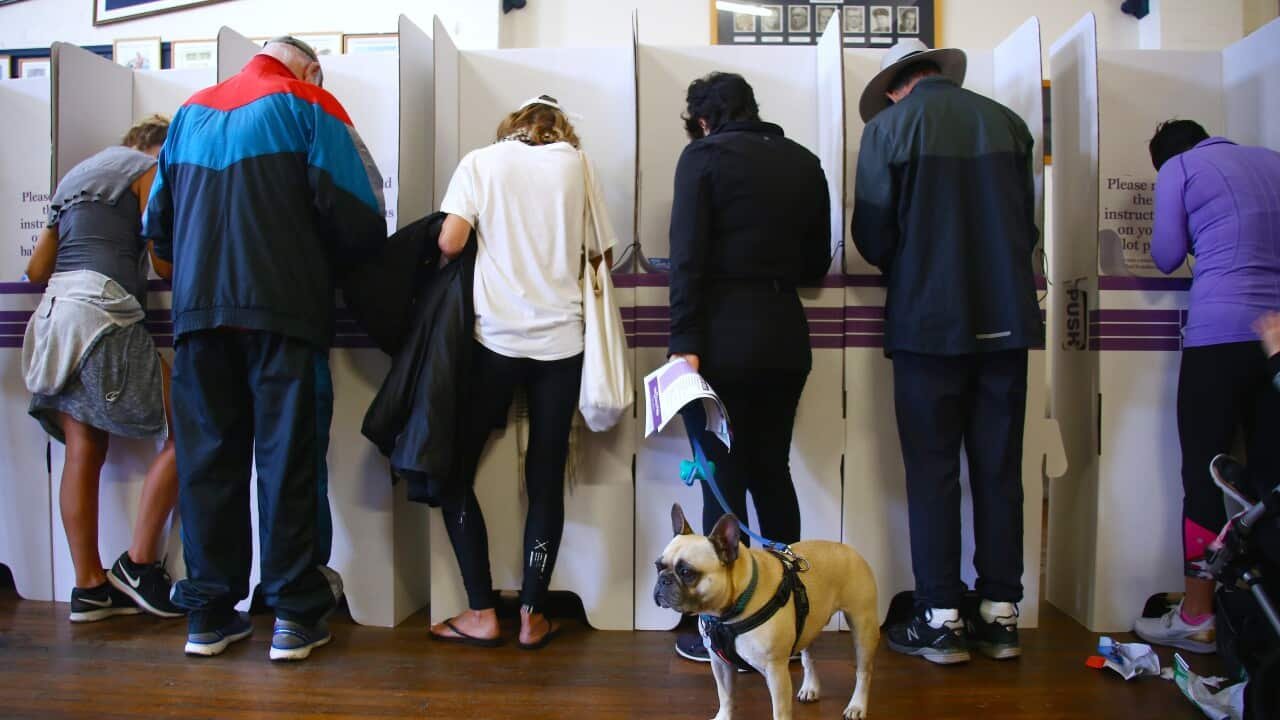READ MORE

ഓസ്ട്രേലിയന് വഴികാട്ടി
Read this story in English:
If you’re sick and your doctor prescribes medicine, your next step is to visit your local pharmacy to have your prescription filled.
Your local pharmacist is able to dispense prescription medications as well as being a source of healthcare advice and other health products and services. It’s important to understand how Australia’s pharmacy system operates, so you know what to expect when visiting a pharmacy.
Melbourne pharmacist Lena Mansour has experience working in both Egypt and Australia. She has witnessed firsthand the differences in how pharmacies operate here compared to overseas.
“People coming from different backgrounds have different understandings of how the system works. Some people are not aware of some elements – for example that a medical prescription has an expiry date, that could be one year or six months from its prescribed date, depending on the type of medicine,” Ms Mansour says.
Another common situation is patients asking for medicines that they’d previously had prescribed by a doctor outside of Australia.
“In such cases I explain to them that this medicine cannot be supplied by a pharmacist except when the patient comes in with a prescription essentially written by a doctor here in Australia,” explains Lena.
Prescription medication
In Australia, only registered doctors can issue prescriptions, which can then be filled at pharmacies.
“Some prescriptions will be hand written from a doctor, some will be computer generated and printed, and some will come as what is called an e-script - a code that the doctor can send to a mobile phone or email,” explains Tom Andrew, who owns Captain Stirling Pharmacy in Perth.

E-scripts are accessible on your phone Credit: Yong Hwee Goh
Pharmacists may stock both brand-name and cheaper generic versions of the same medications which have the exact same active ingredient as the brand name medication and have been tested and approved by the government regulator.
“Within a pharmacy there will be a dispensary where the pharmacist will dispense the medicine. It will often be a designated area and sign posted,” Mr Andrew says.
“The pharmacist or pharmacy staff may need to check some details with the patient before filling the prescription. Some details may be quite simple like their address, date of birth or Medicare status. Some other details may include current weight - especially with children, whether it is a new medicine, and what brand the patient may wish to have.”
The pharmacist will then prepare the medicine, ensuring the correct medicine is being dosed correctly for the patient.
“Most prescriptions will be filled within five to thirty minutes. A new prescription for a new medicine and a new patient will likely take longer to dispense than a medicine for a regular patient who has been taking the same medicine for a long period of time,” Mr Andrew says.
Classification of medicines
All medicines in Australia are classified as poisons, and each medicine is categorised into a schedule based on how safe that medicine is for the patient.
Sometimes there can be differences in accessibility to some schedules of medications in different states or territories across Australia.
“Unscheduled medications are available outside of pharmacies in locations such as supermarkets, convenience stores and petrol stations. Pharmacy Medicines also known as Schedule 2, are restricted for sale within pharmacies but do not require a prescription. In most states, excluding Western Australia - they are available for self-selection by the public but within the area of supervision by a pharmacist,” Perth pharmacist Yong Hwee Goh explains.
“Pharmacist-Only Medicines - Schedule 3, do not require a prescription but are only available under the advice and supervision of a pharmacist, that’s because they can carry a greater risk of adverse effects and potential for misuse. Examples include stronger antihistamines which may cause drowsiness, pseudoephedrine-containing products, asthma relievers and much more. Prescription Medicines - Schedule 4, require a prescription prior to dispensing and purchase at a pharmacy.”
Australia has a Pharmaceutical Benefit Scheme, or PBS, which is a subsidy designed to provide affordable access to a range of medicines – and to receive the subsidy, the patient must be an Australian Resident and hold a current Medicare Card.

Pharmacist Lena Mansour - Image supplied. Pharmacist Tom Andrew – Image supplied. Pharmacist Yong Hwee Goh - Image supplied.
“Where a patient has a concession card then a PBS medicine will cost them $7.70 per supply. A supply may be one- or two-months' worth of that medicine. For a general patient that supply is capped at $31.60. It then means the cost of the medicine is likely to be the same in any pharmacy, whether that be in a busy city or in a remote country town.”
Australia also has a reciprocal health care agreement with several other countries, so even if a patient doesn’t have an Australian Medicare card, they may still be able to purchase their medicine at the PBS subsidised rate.
Not all medicines in Australia are covered by the PBS.
“These medicines will be dispensed as what is called a private script. A private script is not covered by Medicare so the price will vary from pharmacy to pharmacy. Whilst they may not have Medicare to subsidise the cost of the medicine, those who have private health insurance will find the insurers will often contribute to the cost,” Mr Andrew says.

Pharmacists offer a large range of healthcare services and products. Credit: Yong Hwee Goh
More than just filling prescriptions
Pharmacists can also provide a range of other healthcare services.
“Pharmacists are often the primary contact for patients in the community and can help diagnose and treat many conditions such as colds, allergies, headaches, eczema, dermatitis, acne, urinary tract and fungal infections - these are just to name a few,” Yong Hwee explains.
“A pharmacist can conduct a Home Medicines Review based on a referral from a patient’s general practitioner – a GP, this process helps to identify any issues a patient might be having with their medications and recommendations by the pharmacist to their GP for better medication management.”
Pharmacists are also able to provide selected health screenings such as blood glucose and blood pressure monitoring, anaemia testing and diabetes screening.
In some states and territories, pharmacists are also able to give immunisations such as for Covid-19 and influenza and dispense some scheduled prescription-only medicines - such as the oral contraceptive pill, without the need for the patient to see a doctor.
If you have a chronic or life-long health condition - such as high blood pressure, your doctor may provide a prescription that allows repeat medications to be dispensed.
“A prescription may have repeats specified and this allows the patient to purchase more medications multiple times without a new prescription being issued each time. In this case, the pharmacist will dispense a repeat prescription form which is then attached to the original prescription. These two copies must be kept together to form a valid prescription for dispensing each time,” Yong Hwee says.
In some situations, such as when a type of medicine is not easily available, or is needed for a particular use, some pharmacies like Tom's, can also compound medicines.

Inside a compounding pharmacy Credit: Tom Andrew
“Or the medicine may be in a different dosage form like a liquid for a child, or a paste for a dog. Some medicines may need to be compounded in order to get a specific dose tailored especially for that patient.”
Pharmacists are a key healthcare service
Whether you’re concerned about your ill child or a chronic health condition of your own, it can be useful to visit the same pharmacy and get to know your pharmacist so they can help to manage the health care of you and your family.
As Lena explains, working as a community pharmacist is a fulfilling role making a difference to people’s lives every day.
“You get to advise patients on their health concerns, offer different treatment options that best suits them, and encourage their healthy lifestyle choices,” Ms Mansour says.
“It can be very rewarding assisting elderly in organising their medications or helping a mom to soothe her unwell child and finally get some restful sleep after a long day.”
Subscribe to or follow the Australia Explained podcast for more valuable information and tips about settling into your new life in Australia.
Do you have any questions or topic ideas? Send us an email to [email protected]














